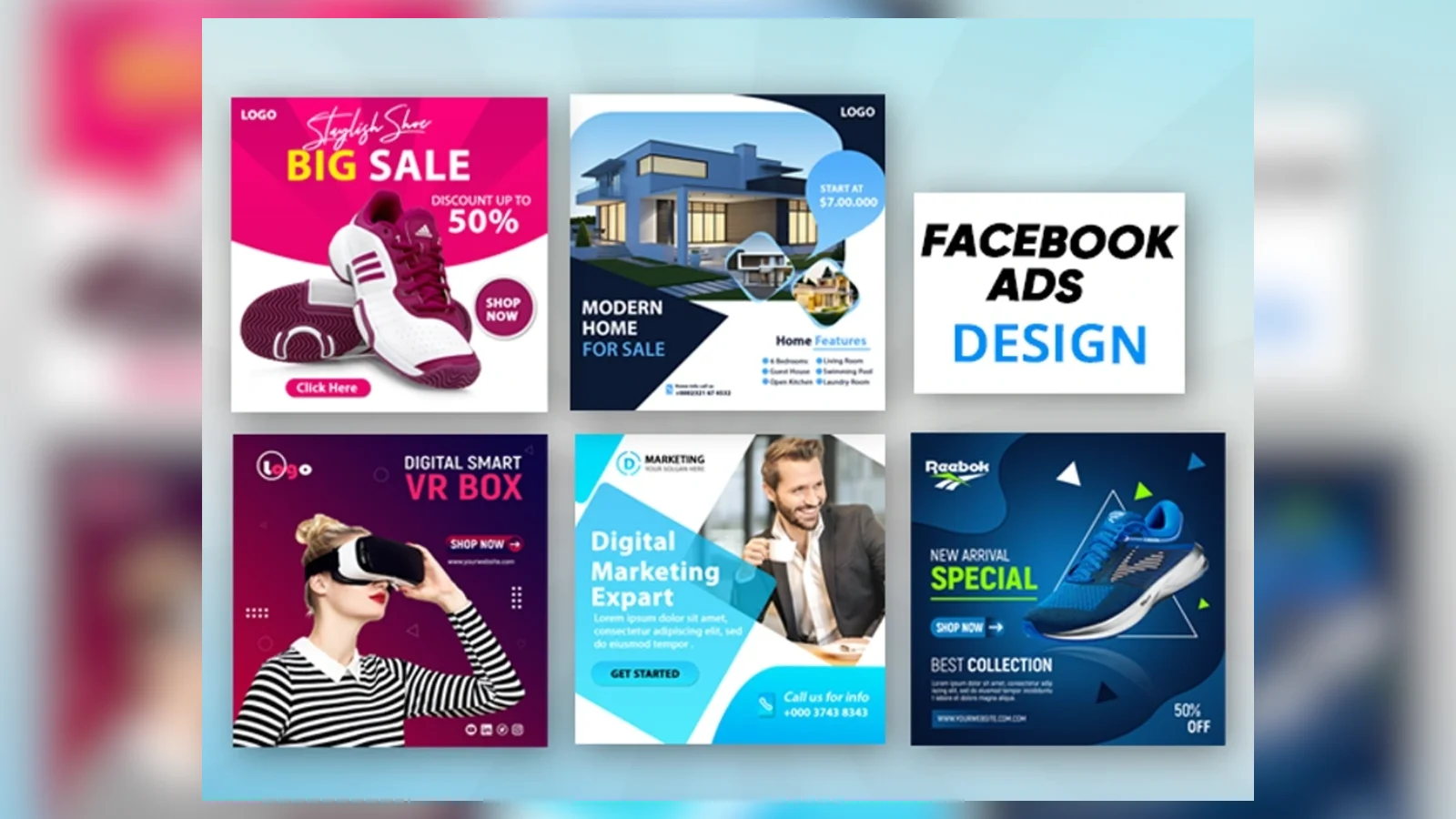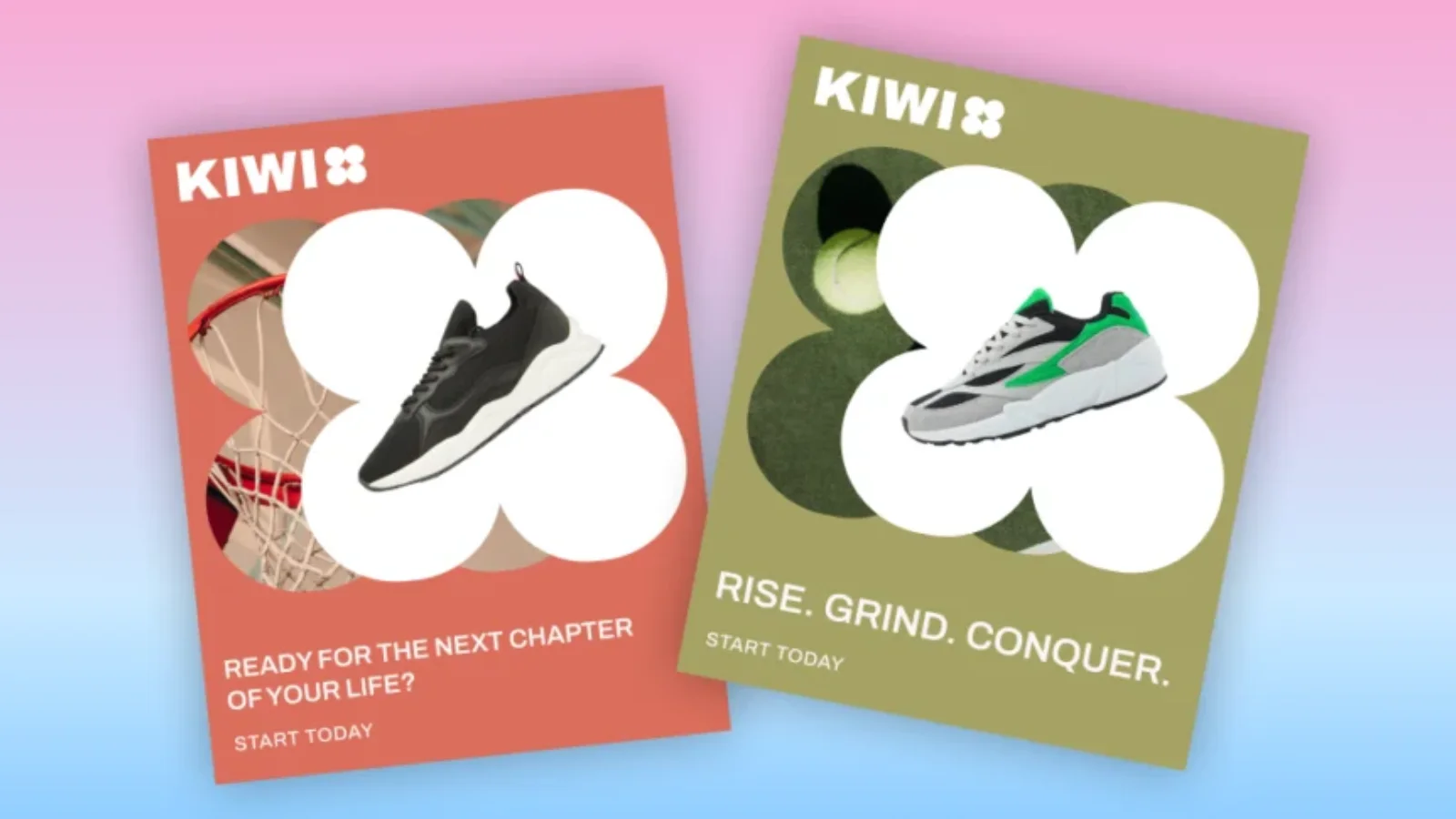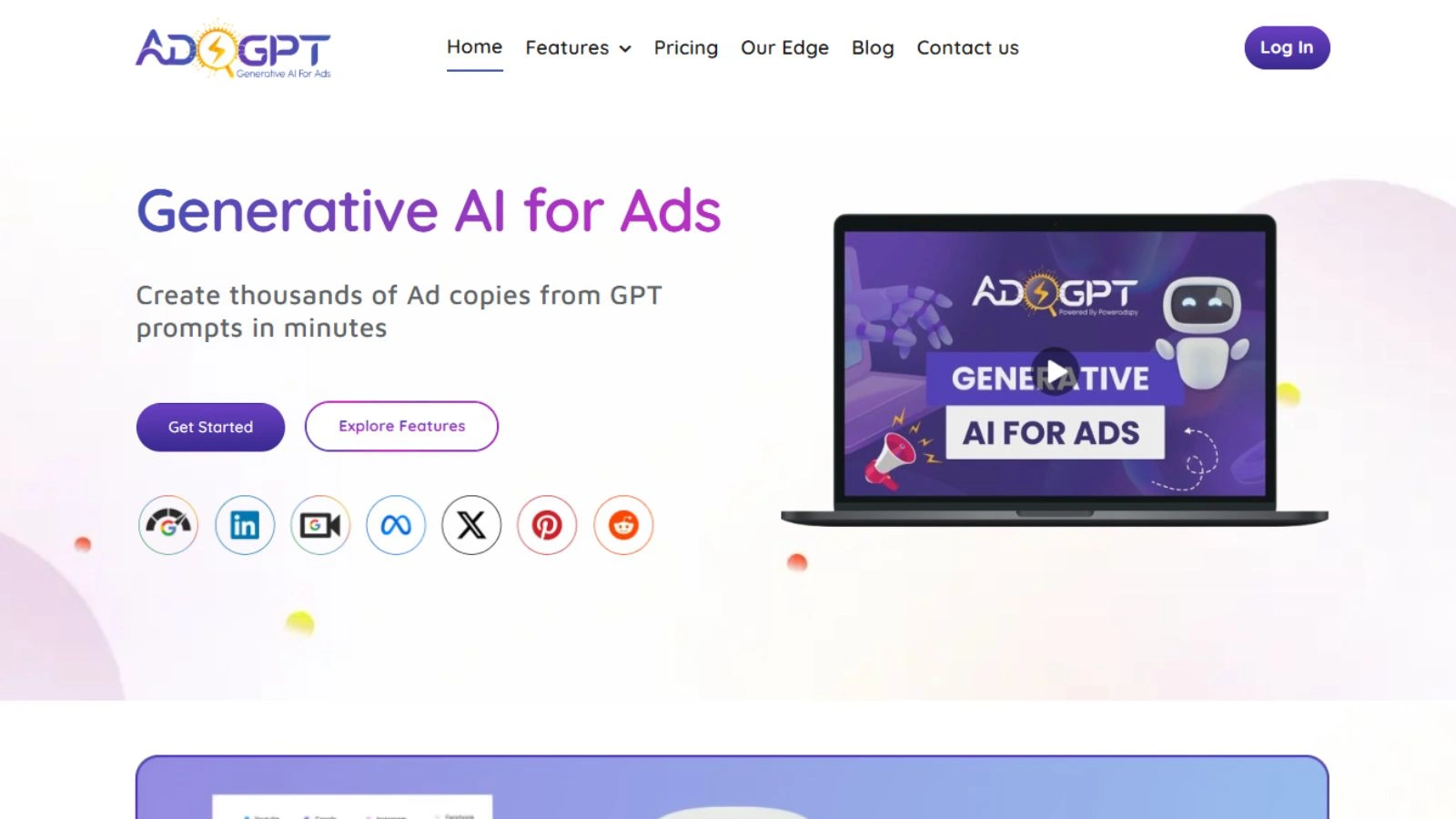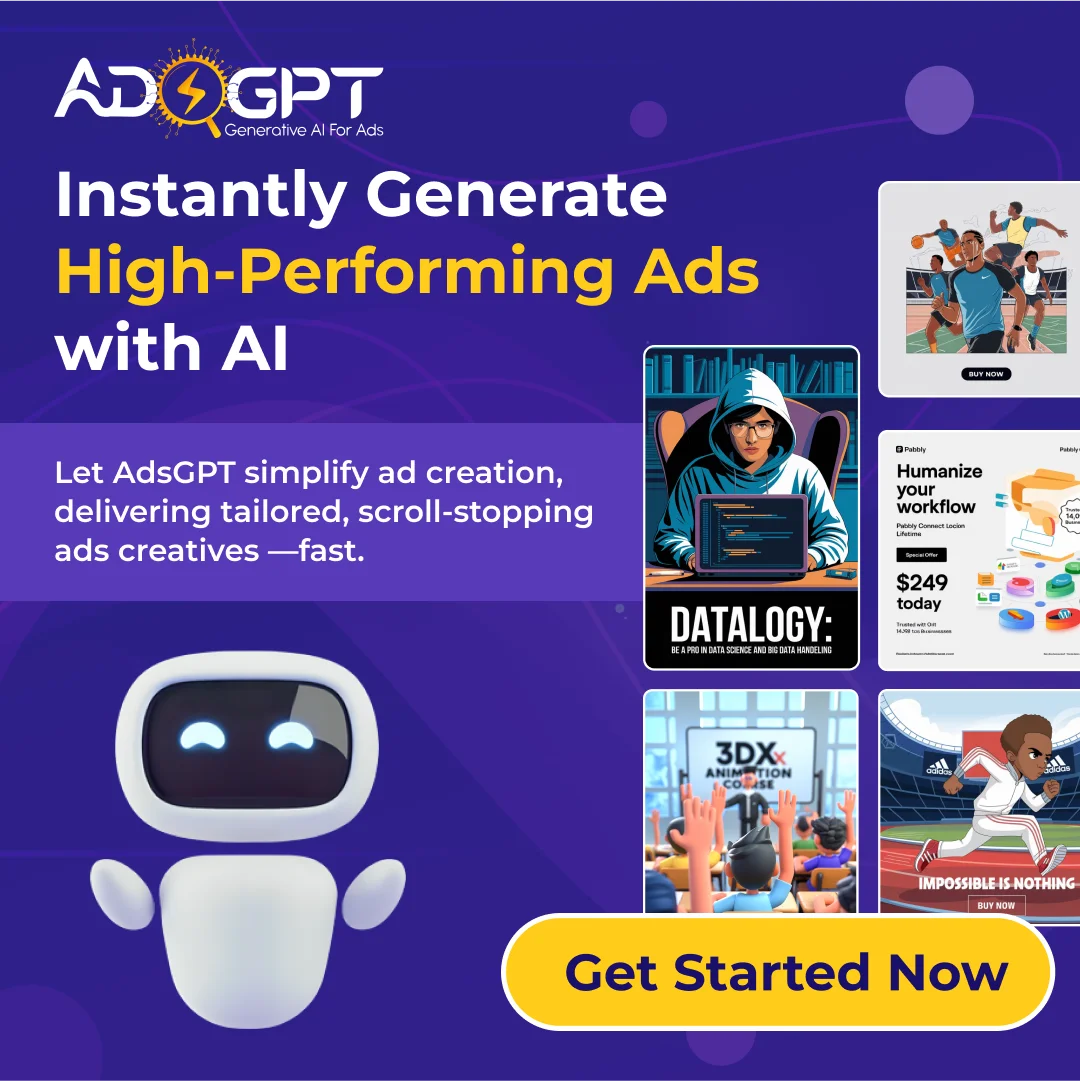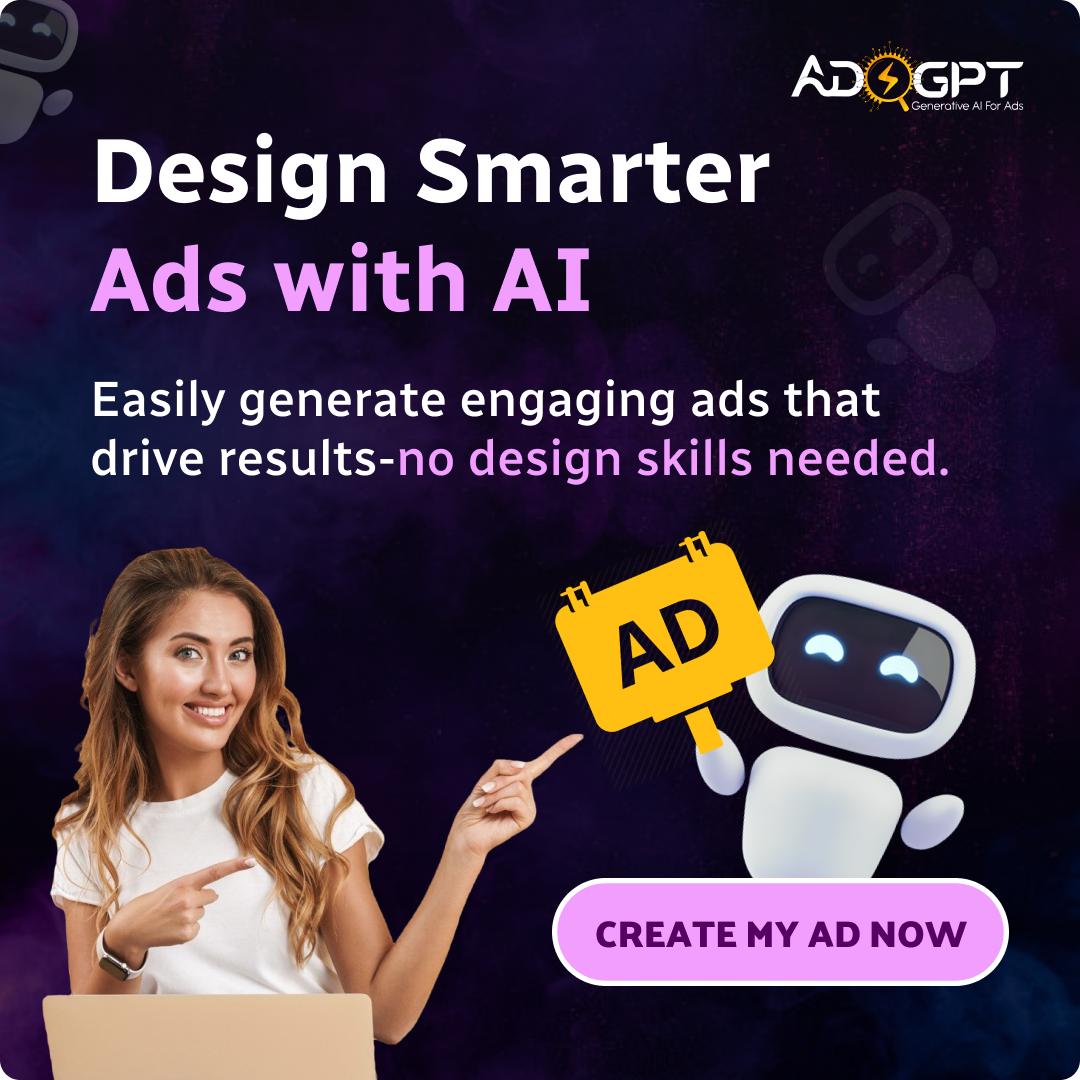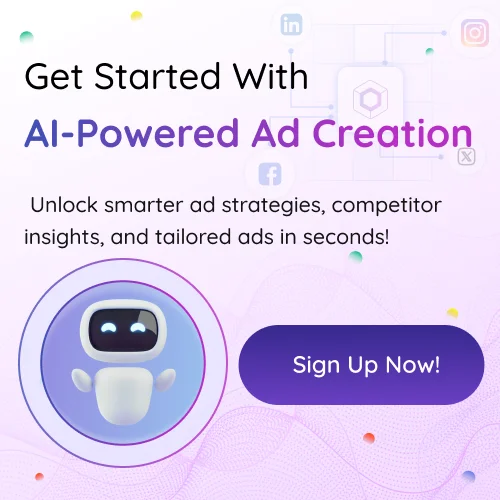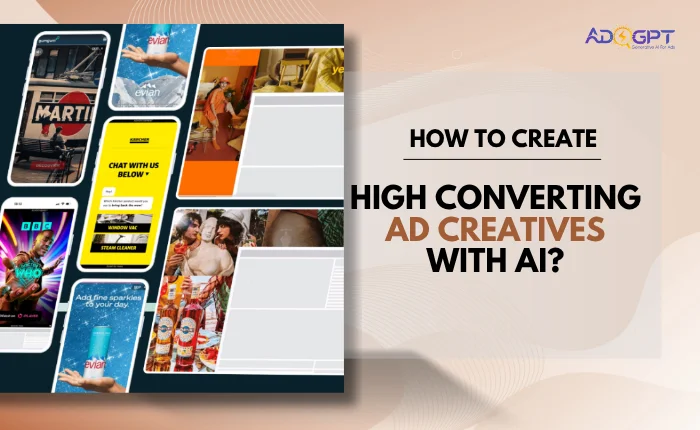
Most ad creative fall flat because they fail to connect with the audience. Marketers and employers spend hours testing headlines, visuals, and formats only to see disappointing results. The real challenge isn’t a lack of effort but a lack of direction. A high-converting advertisement design grabs attention faster than assumed.
It speaks directly to the viewer and drives them to make a purchase. That’s easier said than done—unless you know how to leverage AI the right way. In this blog, we’ll walk you through simple, efficacious steps to create ad designs that don’t just look good—they deliver real results.
In a hurry? Listen to the podcast now
What Exactly Is Ad Creative?
Let’s face it—ads are everywhere, but only a few make us stop, notice, and click. That’s the power of a well-crafted advertisement design. It’s more than just a catchy image or clever line. It’s the combination of visuals and words that tells your brand’s story in a way that grabs attention and drives action.
When someone scrolls through their feed or watches a video, it’s the design and layout that either hooks them or gets ignored. And for marketers and employers investing in paid campaigns, that difference means everything.
An Ad layout includes the actual components your audience sees and interacts with—images, videos, text, animations, and sometimes even interactive features. Whether you create it manually or with the help of an AI powered ad creative, it’s the front-facing part of your campaign that translates strategy into emotion. You may have a great product, but if the creative doesn’t connect, the message falls flat.
And here’s the catch: you don’t need a massive budget to get it right—you need relevance, clarity, and an understanding of what clicks with your audience. That’s where the magic of a good ad design truly lies.
But what elements make a perfect ad piece creative? Let’s discover!
What Are The Key Elements Of An Ad Creative?
Creating an effective ad isn’t about throwing a few visuals and copy together—it’s a strategic process. Here are the core elements every strong ad design should include:
- Visuals: High-quality images, short videos, or animations that grab attention and reflect your brand identity. These are your first impressions—make them count.
- Headline/Copy: Clear, persuasive text that communicates your message quickly. It should spark curiosity or offer value upfront.
- Call-to-Action (CTA): A direct prompt telling the viewer what to do next—shop now, learn more, sign up. Without this, interest doesn’t convert into action.
- Platform Optimization: Every platform has its own best practices. Your ad creative should adapt to various formats—Instagram Stories, LinkedIn banners, YouTube pre-rolls, and more.
- Brand Consistency: Colors, logos, fonts, and tone of voice should align with your overall branding. Confusion kills trust—and conversions.
When these elements work in harmony, your advertisement creative becomes more than just an ad—it becomes a high-performing asset that supports your marketing goals. Whether you build it manually or with the help of an AI ad generator, the strategy behind it remains the same.
Now that you know which are the essential elements for a high-converting ad, let’s understand how to create them.
How To Create High-Converting Ad Creatives With AI?
Creating a high-converting ad design is no longer just about great design or clever copy—it’s about precision, speed, and performance. Marketers and employers often invest time and budget into ad campaigns that look good but fail to convert. The reason? Weak messaging, poor targeting, or visuals that don’t resonate. That’s where AdsGPT, a generative AI for ads, steps in—not just as another AI tool, but as your smart assistant for crafting ads that work.
Read More
How To Create AI Powered Ad Creative That Works?
AI Ad Generator: Boost Your Ads with Ultimate Efficiency
What Is AdsGPT & How Does It Create High-converting Ads?
AdsGPT combines audience insights, proven copy frameworks, and design suggestions to help you generate ad design assets that drive real action, not just views.
1. Know Your Audience Without Guesswork
One of the biggest challenges in advertising is understanding what your audience wants. You can’t build an effective ad if you’re only guessing their pain points or preferences. AdsGPT uses AI to analyze real data—interests, behavior patterns, and trends—so you can shape your ad message with confidence.
You no longer need to start from a blank screen or rely solely on past campaign performance. AdsGPT gives you ready-to-use suggestions tailored to your industry and audience. It helps your ad creative hit the mark from the start.
2. Instantly Generate Attention-Grabbing Ads
Creating ads that hook your audience in the first few seconds is hard, and it’s even harder when you’re juggling multiple campaigns. AdsGPT solves this by providing you instant access to ad variations that are short, sharp, and aligned with your campaign goal. Whether you need headlines, taglines, or descriptions, the tool delivers high-performing text in seconds.
Instead of struggling with writer’s block, you get to focus on testing and refining. Your ad design becomes sharper, faster, and optimized for conversions.
3. Design Smarter With Visual Recommendations
Good visuals aren’t just eye-catching—they’re strategic. AdsGPT helps you select the right format, imagery style, and layout depending on your campaign objective and the platform you’re using. Whether it’s a vertical video for Instagram or a clean banner for LinkedIn, the AI recommends design elements proven to engage.
That means data backs your ad creative, not just beauty. You save hours on design direction and avoid the outdated formats that no longer perform.
4. Launch Multiple Variations in Minutes
If you’re not A/B testing, you are guessing. But testing takes time—unless you have AI to help. AdsGPT quickly creates multiple versions of your ad with different headlines, CTAs, images, and tone variations. Just a few clicks, and you’re ready to test what works best.
Even better, AdsGPT monitors performance in real-time and suggests optimizations. No more waiting for a campaign to flop before making changes—you adjust as you go, saving budget and boosting ROI.
5. Customize for Every Platform Without Rewriting Everything
Honestly, what works on Facebook won’t work on YouTube, and your Instagram creative won’t automatically click on LinkedIn. AdsGPT understands this. It repurposes your original ad creative into multiple versions optimized for each platform, adjusting everything from text length to visual format.
You keep your messaging consistent while reaching people where they are, with content designed specifically for that space. It’s a smarter distribution, without the manual labor.
6. Learn, Improve, and Repeat With AI Feedback
You can not create high-performing ads overnight. They are the overtime improved ads. AdsGPT, an AI ad generator doesn’t stop at content creation. It helps track how your ad creative performs and delivers actionable feedback. Which ad converts, which visuals click, and when does engagement drop?
This AI-powered learning loop helps you continuously optimize your campaigns. You make better creative decisions based on actual results—not assumptions—while saving hours of manual analysis.
The Bottom Line
Creating a high-converting ad creative doesn’t have to be a long, frustrating process. With the right approach and the support of AI, you can build ad designs that speak directly to your audience, drive engagement, and deliver results. From audience research and copy generation to visual suggestions and performance tracking, AI helps simplify each step without sacrificing creativity.
Whether you’re managing multiple campaigns or just trying to improve one ad set, AI tools like AdsGPT give you a smarter, faster way to produce creatives that work. The future of advertising isn’t just about working harder, it’s about creating smarter.
Let your next ad be driven by data, powered by AI, and built to convert.

